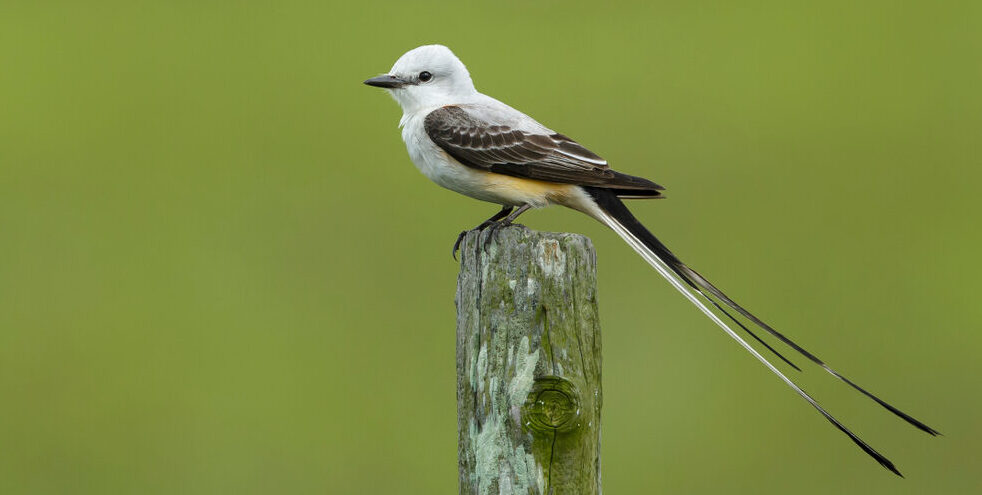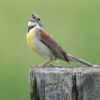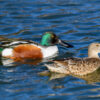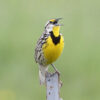Scissor-tailed Flycatcher, Tyrannus forficatus
Bill Rowe
Of the many North American flycatchers, the kingbirds (genus Tyrannus) often strike us as having a lot of “personality”—they are handsome, conspicuous, and noisy. And among the kingbirds, surely the most extravagantly handsome and conspicuous is the Scissor-tailed Flycatcher. As a glance at the map tells you, this bird’s breeding range is centered on the southern Great Plains, a region of open grassland and ranchland; indeed, the three states of Texas, Oklahoma, and Kansas are home to most of the world’s Scissor-tails. Over the whole twentieth century, however, and into the current one, the species has gradually expanded farther and farther to the north, east, and west, and this includes a notable expansion within Missouri, where it can now be found nesting in large numbers in the southwestern quadrant and at least occasionally in the rest of the state. The nests are usually placed in isolated trees or bushes, or sometimes on power poles, utility stations, and other human structures, and the pair may collaborate on building the nest and then on feeding their nestlings with the grasshoppers and crickets that form much of their diet. Nonbreeding Scissor-tails, whether migrants or just wanderers, show up from time to time all around Missouri, as they also do in other states farther from their nesting range; in fall, all of them migrate to Middle America, mainly the Pacific side, to spend the winter.
IDENTIFICATION: Up close, you can’t go wrong: the pale-gray-to-white head and body, with darkish wings and a very long tail, are unlike any other bird. The female’s tail isn’t as crazy-long as her mate’s, but it is still about equal to her own head and body combined. In good light, both sexes have some color on their flanks and belly—pink in males, duller pinkish or orange-buff in females. Seen at a distance, perched Scissor-tails show up as white birds on fencerows or power lines, spotted pretty easily as you drive through their habitat in summer.
ST. LOUIS STATUS: The St. Louis checklist defines the Scissor-tail as Occasional in spring and summer, which means “occurrence usually annual, but in very low numbers.” Often there will be a pair or two nesting at a known site somewhere, and such a location may host them repeatedly, as along Darst Bottom Road near Defiance, St. Charles County, where they are present again this year.
Learn more and listen to the calls of Scissor-tailed Flycatchers here.

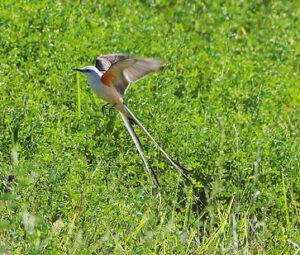
Female or young bird.
Photo Credit: Al Smith
Male in flight; note red underwing patch.
Photo Credit: Al Smith

